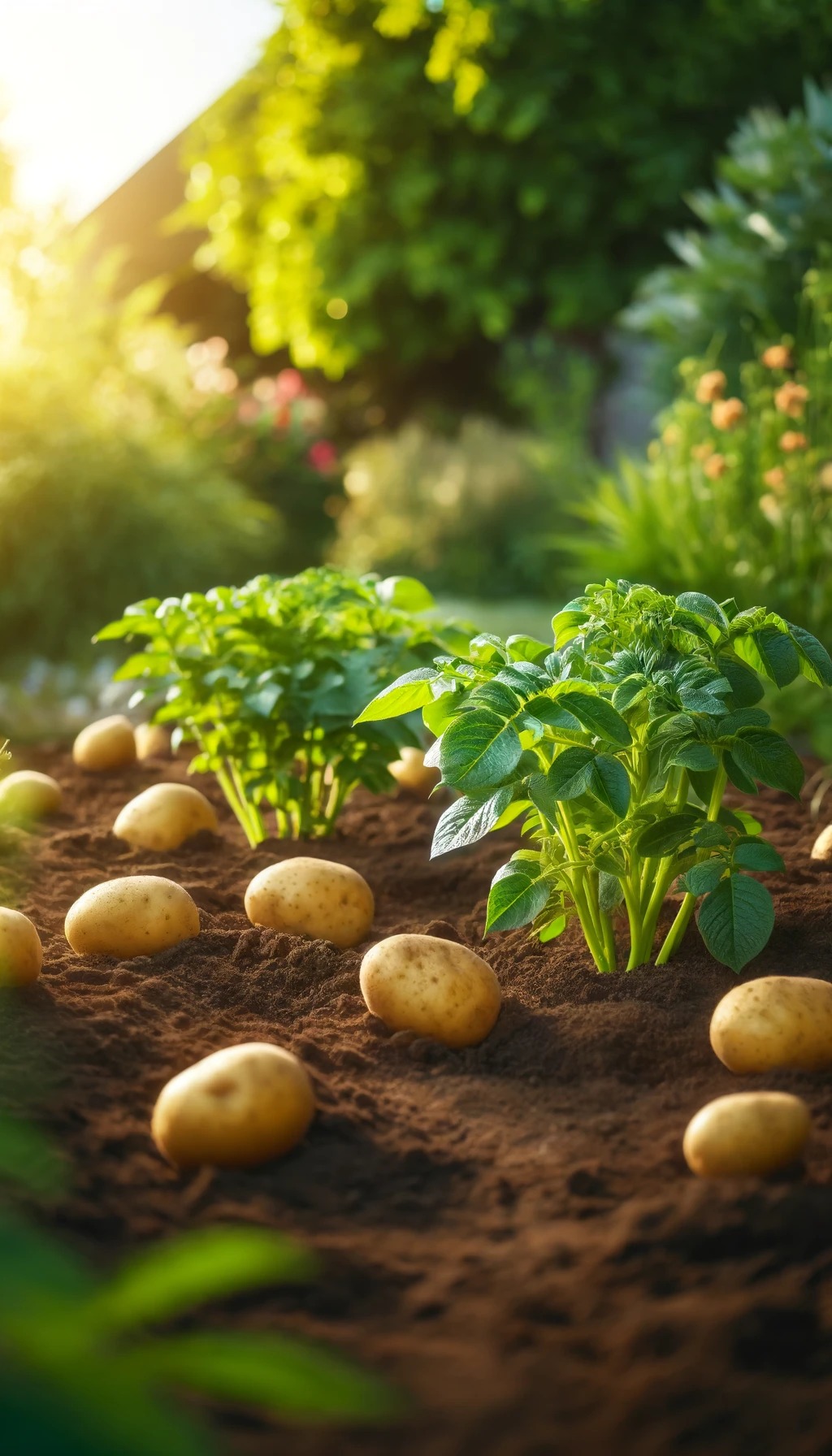
Introduction: Potatoes are a versatile and staple crop in many diets worldwide. Growing big, robust potatoes in your garden can be a satisfying endeavor. In this article, we will share valuable tips and techniques to help you cultivate large, delicious potatoes that are perfect for mashing, frying, or baking.
- Select the Right Potato Varieties:
- Choose potato varieties known for producing large tubers, such as Russet, Yukon Gold, or Kennebec. Your local climate and soil conditions can also influence the choice of potato variety.
- Soil Preparation:
- Prepare well-draining, loose soil enriched with organic matter like compost or well-rotted manure. Potatoes thrive in slightly acidic soil with a pH of around 5.8 to 6.5.
- Planting Time:
- Plant potatoes in early spring, a few weeks before the last expected frost date in your area. They prefer cooler temperatures for sprouting and early growth.
- Planting Depth:
- Plant potato seed pieces (cut tubers with at least one “eye” or sprout) about 3-4 inches deep in rows, spaced 2-3 feet apart. Ensure each piece has ample space to grow.
- Hilling:
- As potato plants grow, mound soil around the base of the plants to create hills or ridges. Hilling helps protect developing potatoes from exposure to sunlight, which can make them turn green and bitter.
- Adequate Spacing:
- Plant potato seed pieces 10-12 inches apart within the rows. Proper spacing allows the potato plants to grow without crowding each other.
- Consistent Watering:
- Keep the soil consistently moist but not waterlogged. Irregular watering can lead to cracked or misshapen potatoes.
- Fertilize Mindfully:
- Apply a balanced fertilizer at planting and avoid excessive nitrogen, as it can encourage lush foliage growth at the expense of tuber development.
- Pest and Disease Management:
- Regularly inspect your potato plants for signs of pests like Colorado potato beetles or diseases like late blight. Use organic pest control methods when needed.
- Mulching:
- Apply a layer of organic mulch, such as straw or shredded leaves, to conserve soil moisture, regulate soil temperature, and reduce weed competition.
- Harvest at the Right Time:
- Harvest potatoes when the plants have flowered and the tops have started to yellow and die back. Gently dig around the base of the plant to avoid damaging the tubers.
- Cure and Store:
- Cure freshly harvested potatoes by allowing them to air dry in a cool, dark place for a couple of weeks. Afterward, store them in a cool, humid location to prevent sprouting and dehydration.
Conclusion: Growing big potatoes requires careful attention to soil preparation, planting techniques, and proper care throughout the growing season. By following these tips and maintaining a vigilant eye on your potato crop, you can enjoy a bountiful harvest of large, delicious potatoes that are sure to enhance your culinary creations. Happy potato growing!